Between Austro-German culture, Mediterranean influence and alpine traditions, the multiple identities of South-Tyrol enjoy in every sense of the term. So... andiamo !
End of World War I: the Kingdom of Italy recovers an Austrian region nestled in the Dolomites South Tyrol. Becomes the autonomous province of Bolzano, this region north of Italy Now attracts hikers from all levels, but also cyclists and winter sports enthusiasts.
Beyond that, she won a public among all curious and curious in search of wonder against Mother-Nature. It must be said that the latter was rather generous with South-Tyrol. Indeed, all the violins agree: the place is a surety of beauty. “Presque as if the journey of nature had mystically allied itself to the journey to man” adds the Italian writer Aldo Gorfer, referring to the High Adige ( Alto Adige in Italian, Südtirol in German), the other name given to the region.
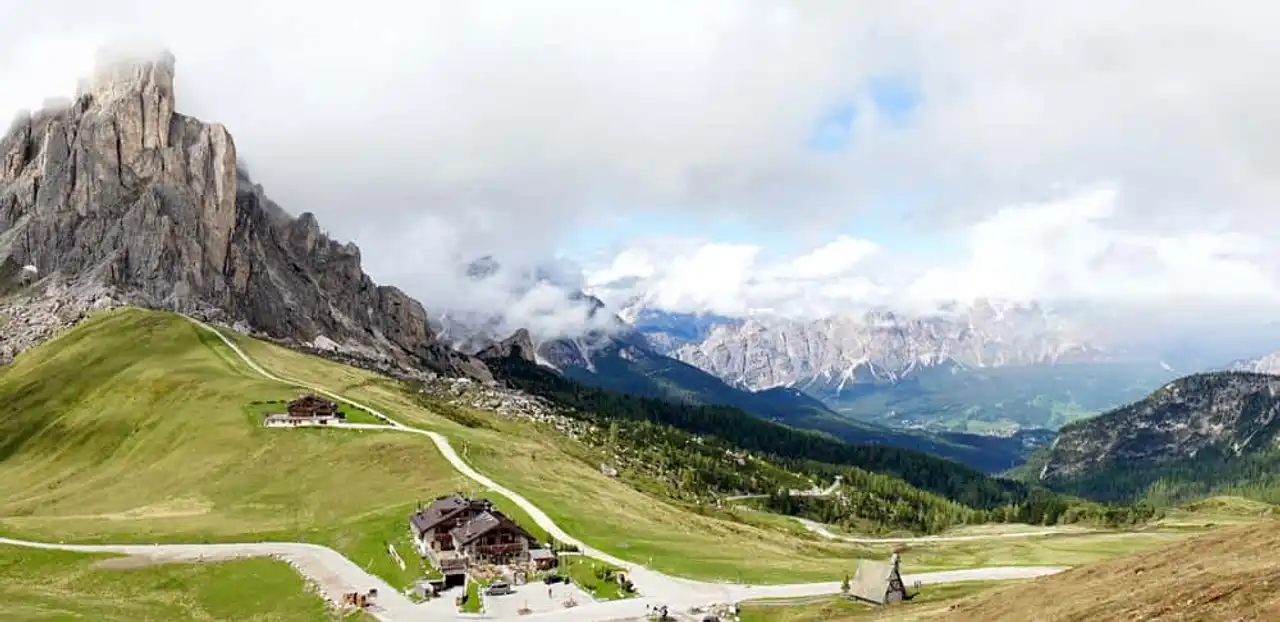
Photo credit: Shutterstock – Elis_s
Our mini road-trip will make us cross magnificent valleys, home to some picturesque villages where life runs around markets, crafts and gastronomy. And of course, our path will cross lakes, green or rocky mountain landscapes, and even a handful of vines.
From west to east, it takes only 6 to 7 hours to cross the South-Tyrol. However, we will take the time to enjoy, stroll, and take a few steps aside...
Indeed, the region is pleasant all the time, and surprising sometimes. Who expects to find a vibe Mediterranean in this former Austrian region? What is this isolated chapel doing in the middle of the forest? Is it reasonable to eat an Italian risotto in main dish, and an Austrian strudel in dessert? Because the nearby influences of Upper Adige, a region that is also trilingual, actually make all its wealth.
Let’s go together to explore South-Tyrol, respecting the rule of epicurism all’italiana : take time, and enjoy every moment (and eat everything, of course).
Departure from Val Venosta
? City of departure: Glorenza
? City of arrival : Stelvio
⛰ in Places to visit: Glorenza, village and lake of Resia, road and pass of Stelvio
? Recommended time: 2 days
The first stage of our road trip in South Tyrol will begin in the western part of the region. There is the sunny valley of the Alps: Val Venosta, whose name comes from the mysterious Celtic tribe of the Venetians , which then populated the valley during Antiquity.
The place wins its nobility letters to visitors by its particularly mild climate, by its cultivation of apples and famous pears “Pala”, and of course, by its pass and other wonderful lakes. We'll be back soon! In addition, fans of all kinds of winter sports, Val Venosta will be the place to be (or he posto giusto to make local) to make some descents.
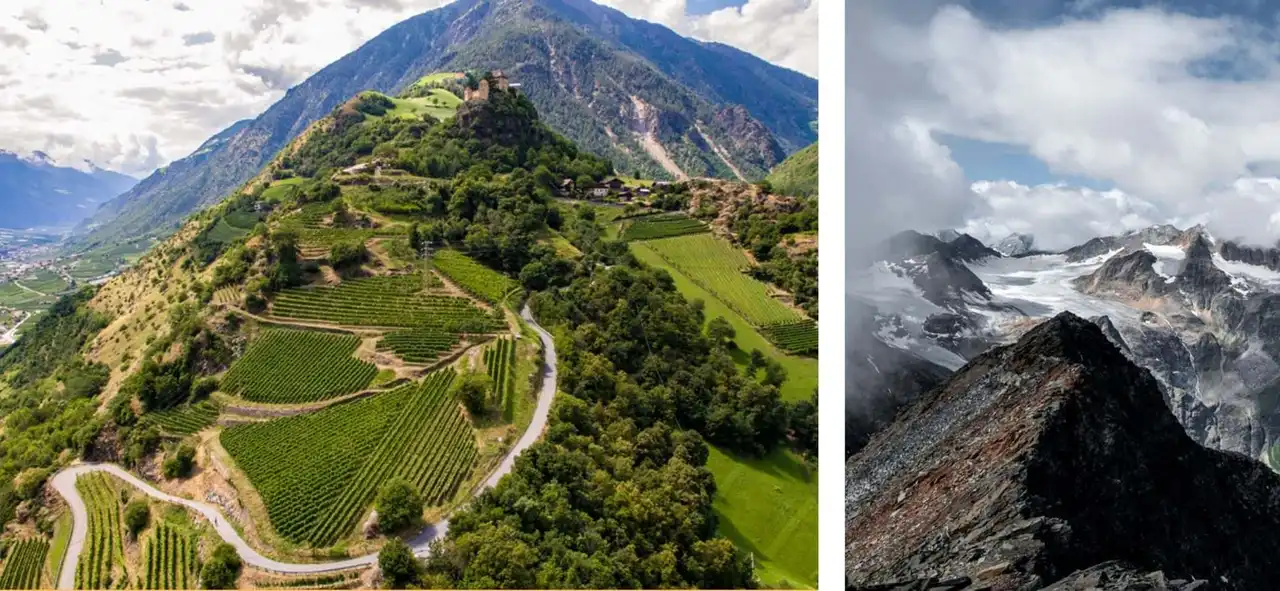
The Val Venosta is only the beginning, and yet...We take a full view! – Photo credits: Shutterstock – DonMarcito
Go first to Glorenza, the smallest town in South Tyrol founded more than seven centuries ago. It is also an extremely well preserved medieval city! Indeed, its ramparts and towers served as a fortress against neighboring enemies. Beyond its remarkable architecture, Glorenza will satisfy art lovers: take a tour at Mostra Paul Flora to admire the work of this cartoonist and cartoonist born in the village.
If you prefer contemporary art, take a look at the GAP workshops. Finally, take the time to observe the strange cubic building “PUNI”, the first Italian whisky distillery, which dates back to 2012.
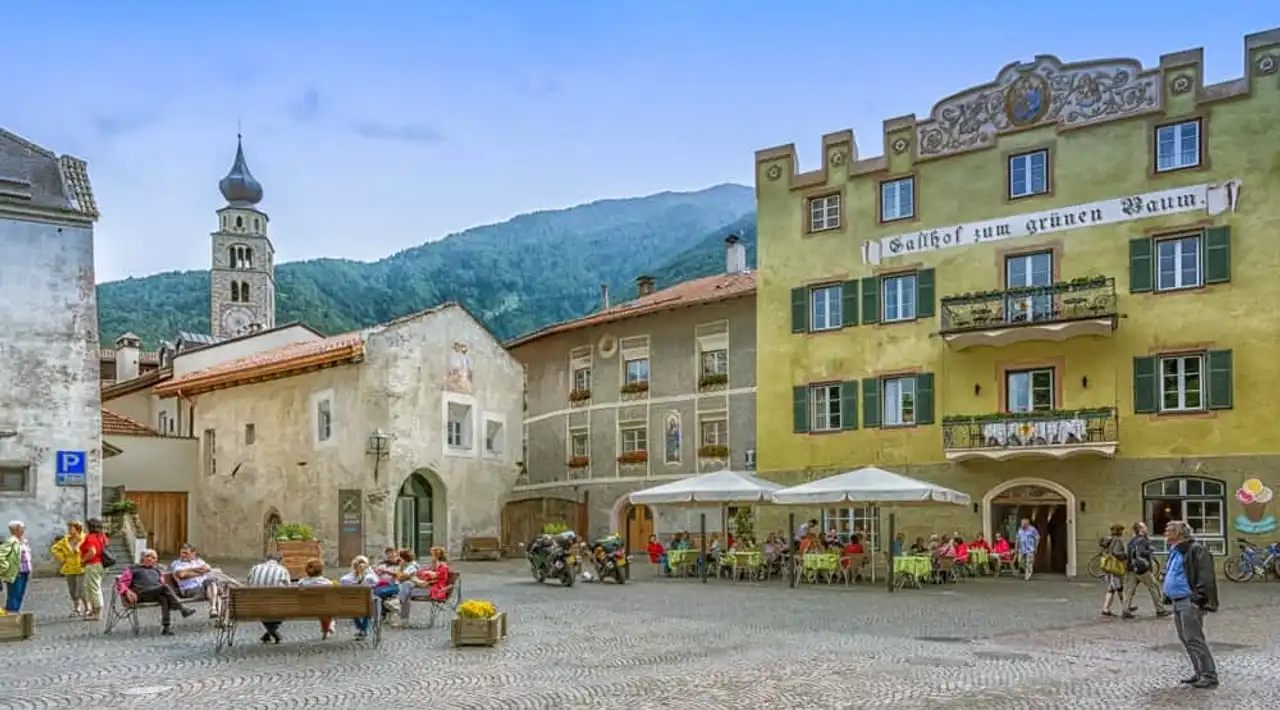
The pretty town of Glorenza – Photo credit: Shutterstock – lorenza62
After half a day walking around the town and a pizza engulfed, it's time to trotting the city for the countryside. About 20 minutes' drive north of Glorenza is in fact Resia, a tourist hamlet whose lake has its name. The Lago di Resia, close to the Switzerland and of Austria , is indeed a must to discover in the South-Tyrol.
Thus, once the suitcases are placed in one of the local hotels on the edge of the lake preferably, it is the time to leave for its exploration.
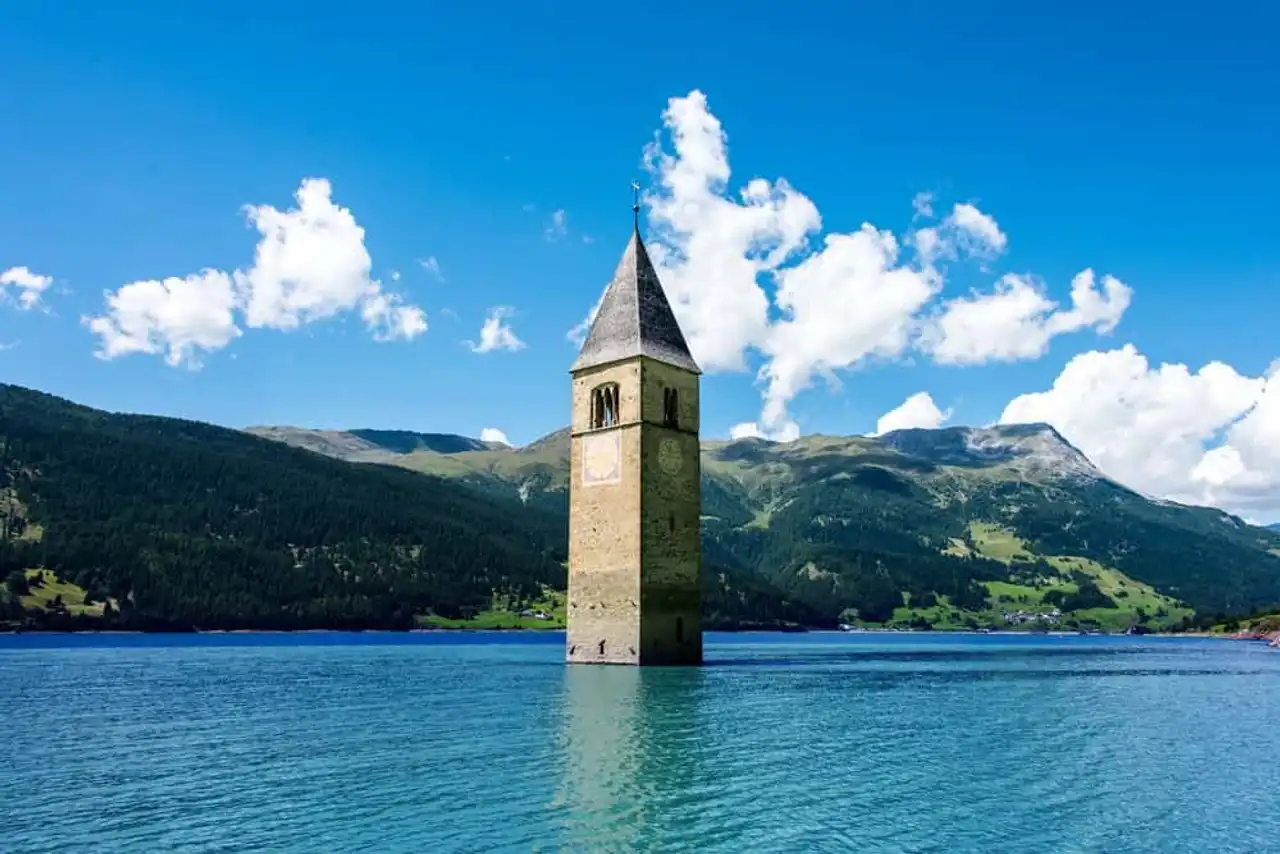
The Lago di Resia and its famous immersed bell tower – Photo credit: Shutterstock – MN84
In the middle of this majestic water point of 6.7 km2, the bell tower of Curon stands. Partly immersed, this Romanesque building dates back to the 14th century. In summer, you can approach the solitary bell tower in a boat, and in winter, if conditions permit, you can reach it by walking on the frozen lake.
The Lago di Resia is also the favorite playground of kite-surfers and snow-kiters, depending on the season. Finally, its surroundings will make the happiness of hikers like winter sports enthusiasts (ski, snowboard, sled...). Anyway: it’s a nice playground!
Moreover, the Lago di Resia is the great brother of another water point, but much smaller in size: the Lago della Muta. You can stop in the village of San Valentino to get close to it and start a good health walk. Also, from San Valentino, it will also be easy to reach snowy trails during the winter season.
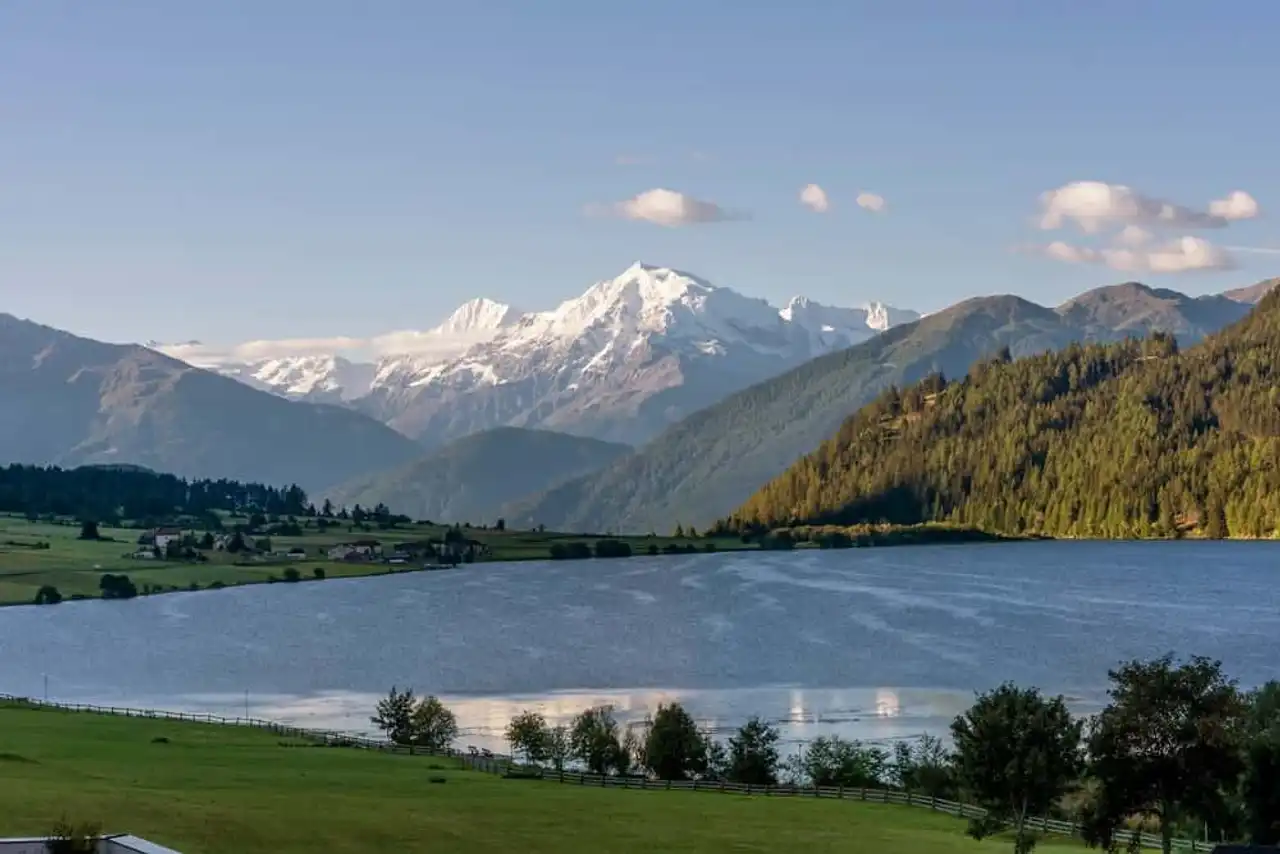
The Lago della Muta and its panorama on Mount Ortles – Photo credit: Shutterstock – Marco Taliani de Marchio
Moreover, all the small villages around Resia and the two lakes are connected by an old commercial road of the Roman Empire, the Roman Empire via Claudia Augusta . And a few kilometers from the lake, the valleys of Vallelunga and Roia will put you full of mirettes!
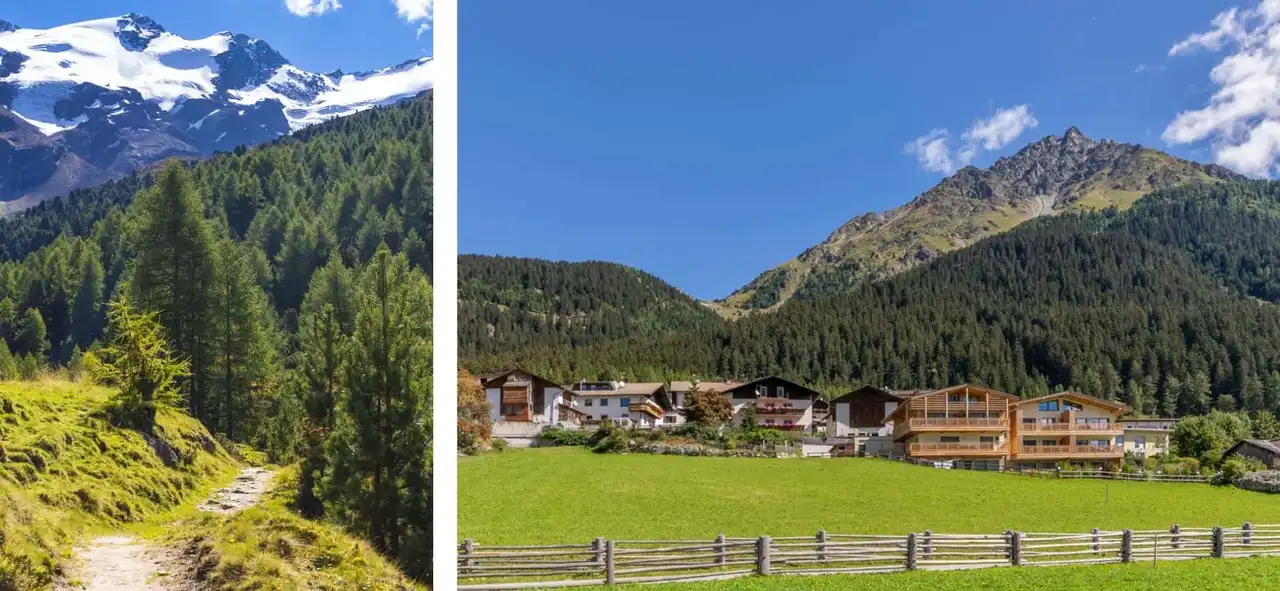
Find it on the left: via Claudia Augusta On the right: the village of Resia Find – Photo credits: Shutterstock – moreimages |MISUMI
After a relaxing night in Resia, it is time to go to the Stelvio region, about forty minutes south. The route goes back by Glorenza, where we will be filled with local specialties to concoct an alpine picnic worthy of this name. Then take the famous zigzagante mountain road that leads to the Stelvio Pass, or Stelvio pass.
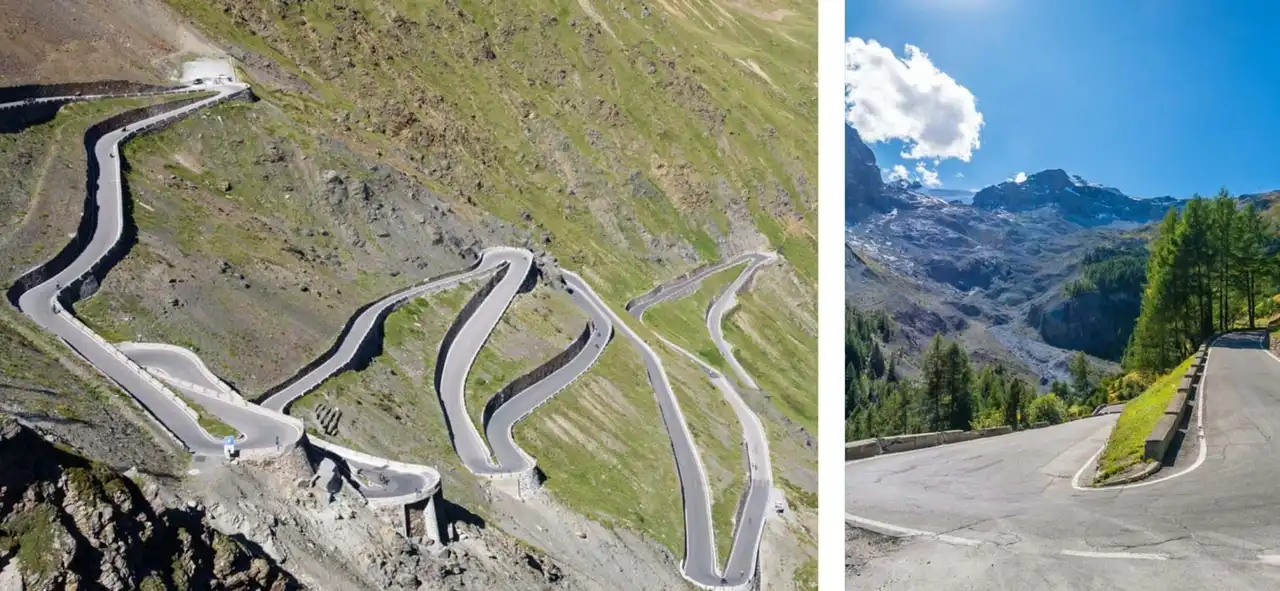
The mythical rise to the Stelvio, which Giro enthusiasts know well – Photo credits: Shutterstock – Placatoocasatec Chris Rinckes
In addition, for more than sensazioni and if you're equipped, the Stelvio road goes off by bike or motorcycle. Once you arrive on this highest road pass in the Italian Alps, it is time to start your snack in front of a landscape that can only open your appetite.
And it’s also time to remember the story... In the early twentieth century, the Stelvio Pass marked the natural border between the Austro-Hungarian Empire and the Kingdom of Italy. He was the scene of the major clashes until the 1919 Treaty of Saint-Germain-en-Laye, which declared South-Tyrol as Italian.
Oral tour in Merano
?City of departure : Stelvio
?City of arrival : Merano
Places to visit: Saint-Nicolas Cathedral, Palazzo Mercantile, Kurhaus, Tappeiner Weig, Trauttmansdorff Castle, vineyards and baths
Recommended time: 1.5 days
We told you in our introduction: the peculiarity of South-Tyrol is based on its balance between Alpine and Mediterranean culture. In Merano, we're looking for the second! Let us begin our exploration in the old medieval city, whose walls leave an opening by three old gates (Passiria, Venosta and Bolzano).
As you stroll through the medieval alleys, you'll fall on your nose with the impressive Saint-Nicolas Gothic Cathedral (XVe) on the piazza Duomo. A few steps from there is another historic square, the piazza del Grano, where the Palazzo Mercantile is nestled. The latter bears witness to the incredible heritage of Merano, and to the richness of a double Italian-Austrian culture.
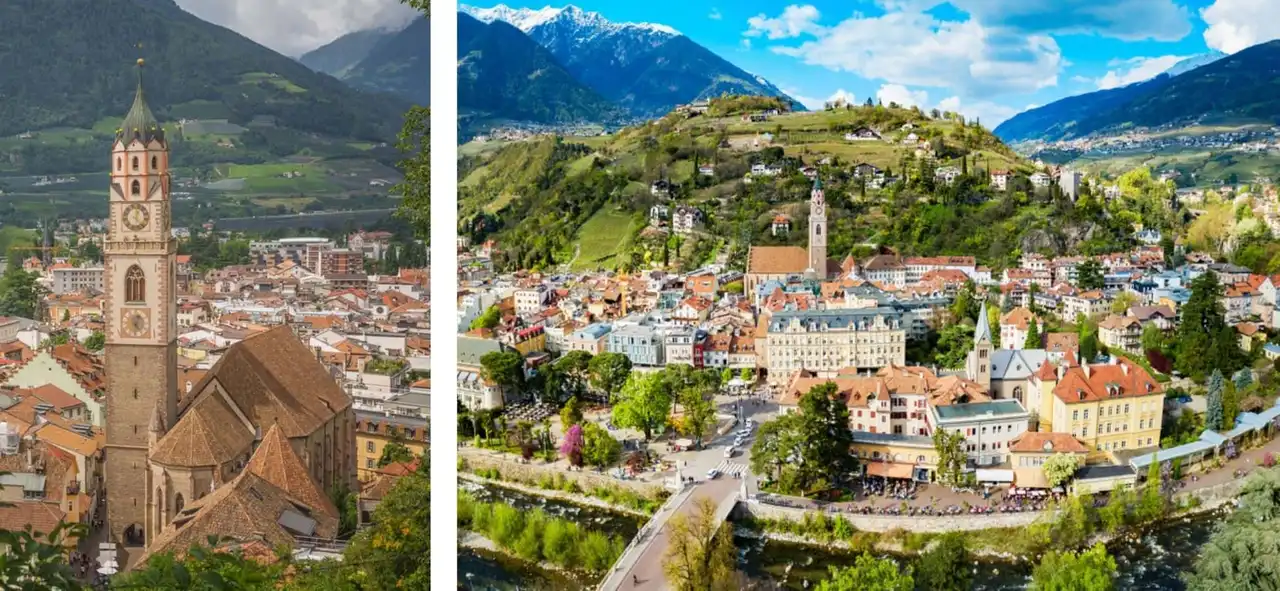
It's hard not to fall under Merano's charm... – Photo credits: Shutterstock – lorenza62
After walking through the arched streets of the medieval centre, a more modern Merano offers to you: that of the Belle Époque! Because after being the capital of South Tyrol during the Middle Ages, Merano became the capital of European aristocrats in the nineteenth century.
To discover this new facet of Merano, just follow the River Passer and let yourself be surprised by the architectural jewels. The Kurhaus is of course an example: a wonderful Art Nouveau building. The latter recalls the period when Sissi the Empress was fleeing the winter coldness of Vienna for chiller In the city. We will return to the relationship between Empress and South Tyrol a little later...
Continue your walk by the Passer to reach the Tappeiner Weg promenade overlooking Merano. This is the time to enjoy a panoramic view from the top!
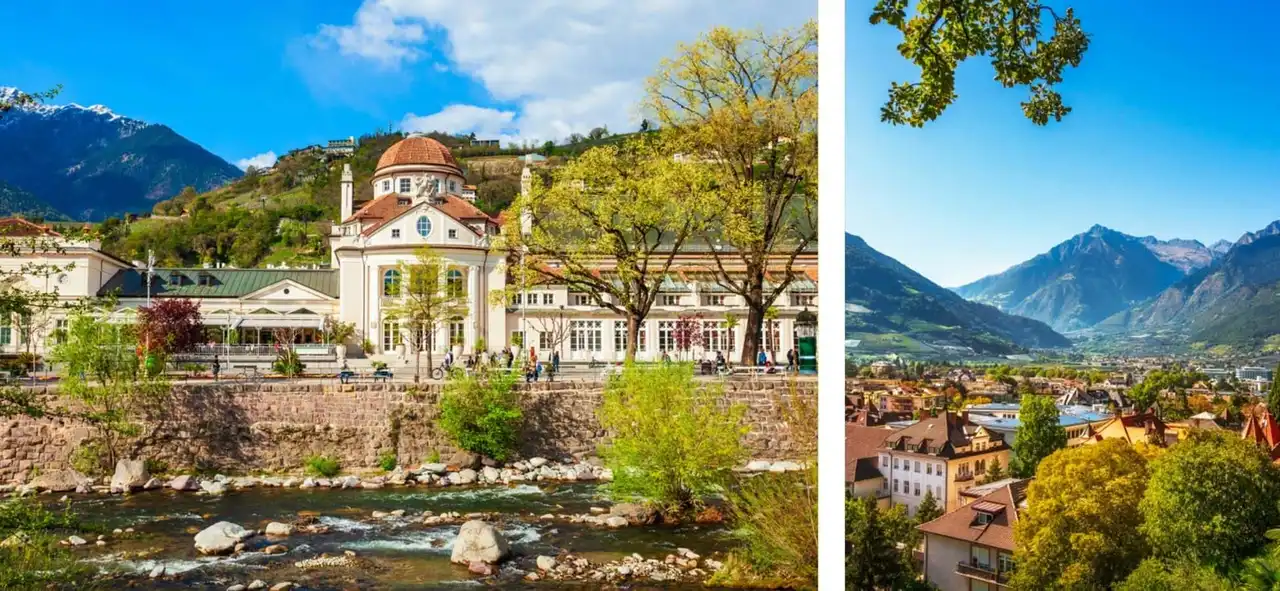
We better understand why The Empress liked to come here... – Photo credits: Shutterstock – saiko3p
This morning in the Italian city will necessarily open your appetite! It is time to taste the famous Alpine-Mediterranean cuisine, a kind of precursor to the contemporary concept of fusion food . The speciality of the corner is the speck. It is a very tasted lean ham. It will be perfectly accompanied by a local cheese. If you prefer the fish, choose a fresh trout directly caught in the Skip! And for vegetarians, let's go on a delicious mushroom risotto.
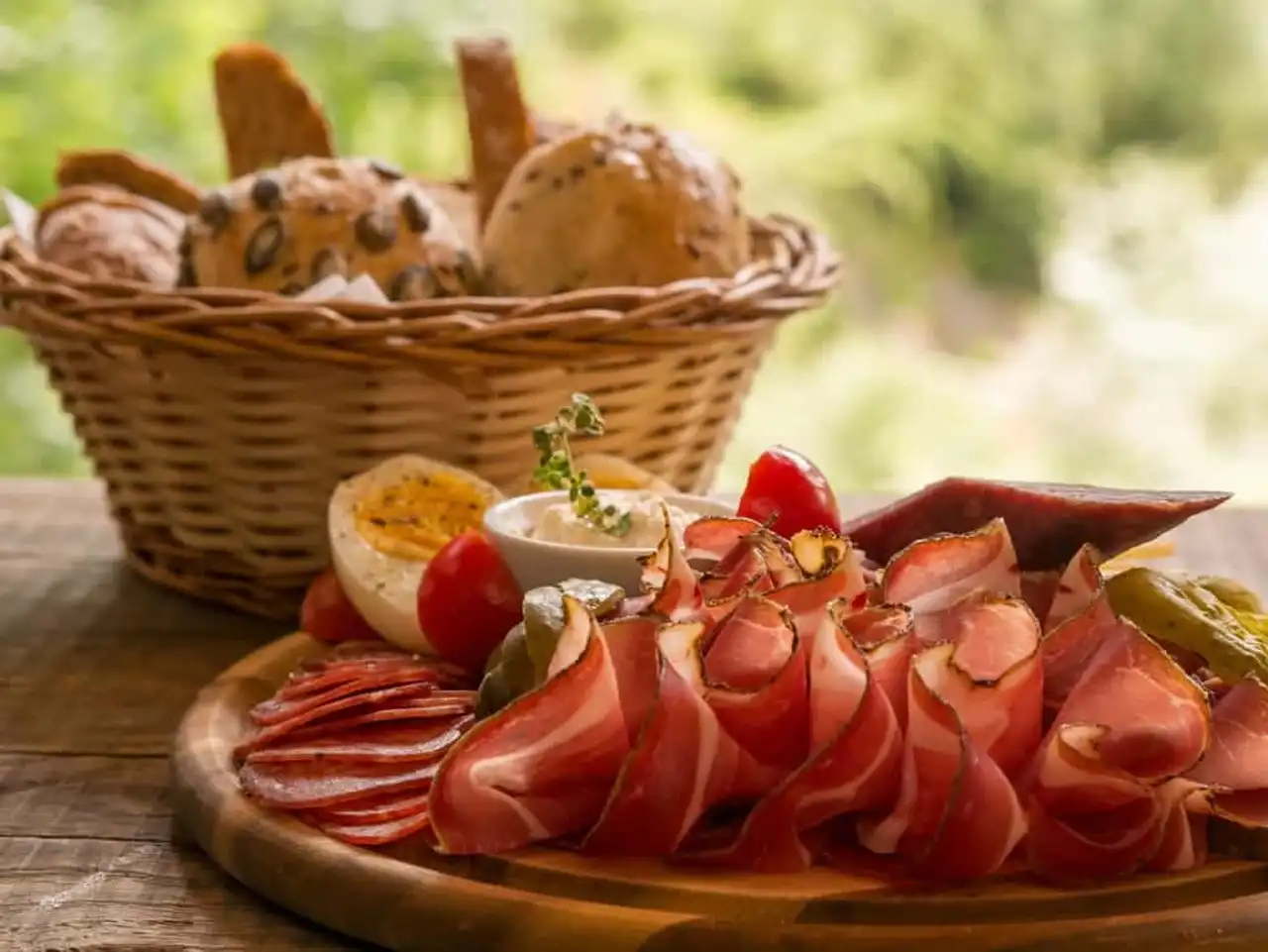
Speck, strudel... South Tyrol cuisine is a perfect testimony to local culture – Photo credit: Shutterstock – M.Funke
In the afternoon at Merano will take place in two stages: a session at the thermal baths and a visit to the vineyards. Because cure and viticulture are two of the city's pillars! For the vineyards, several local wineries offer tastings of indigenous wines, such as the Vernatsch. The Cave Meran Burggräfler or the Rametz Castle, whose production respects the traditional know-how of the South-Tyrol, offer to test their products.
If the weather allows you, make a tour on the side of Lebenberg where they extend on the hillside. A castle stands in the middle of the landscape. As for the thermal baths, usually open until 22h, you will choose the formula that suits you: with or without care, 2 to 3h, saunas, steam baths and other joyful... The slogan is simply: relaxation.
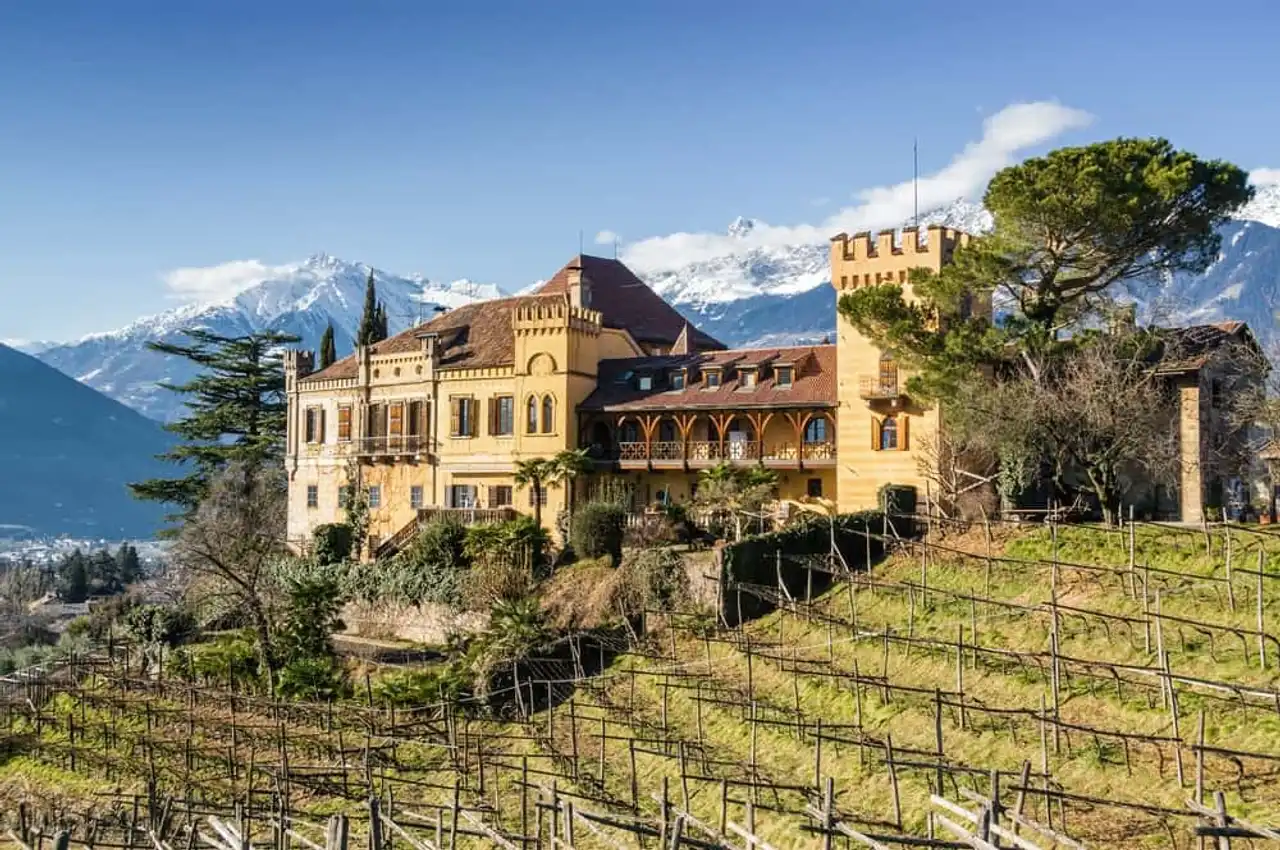
The Château de Ramets, in the middle of the vineyards – Photo credit: Shutterstock – Yuriy Biryukov
The next morning will be royal, as we go to the castle Trauttmansdorff, where Sissi the Empress (the way back!) came to spend good time in the 1870s. We understand it, because the place is simply divine. More than 80 landscapes around the world participated in creating a luxurious botanical garden.
Let yourself be strolled through the different vegetable atmospheres, aquatic gardens and artistic installations that have given this place the reputation of being the most beautiful garden in Italy.
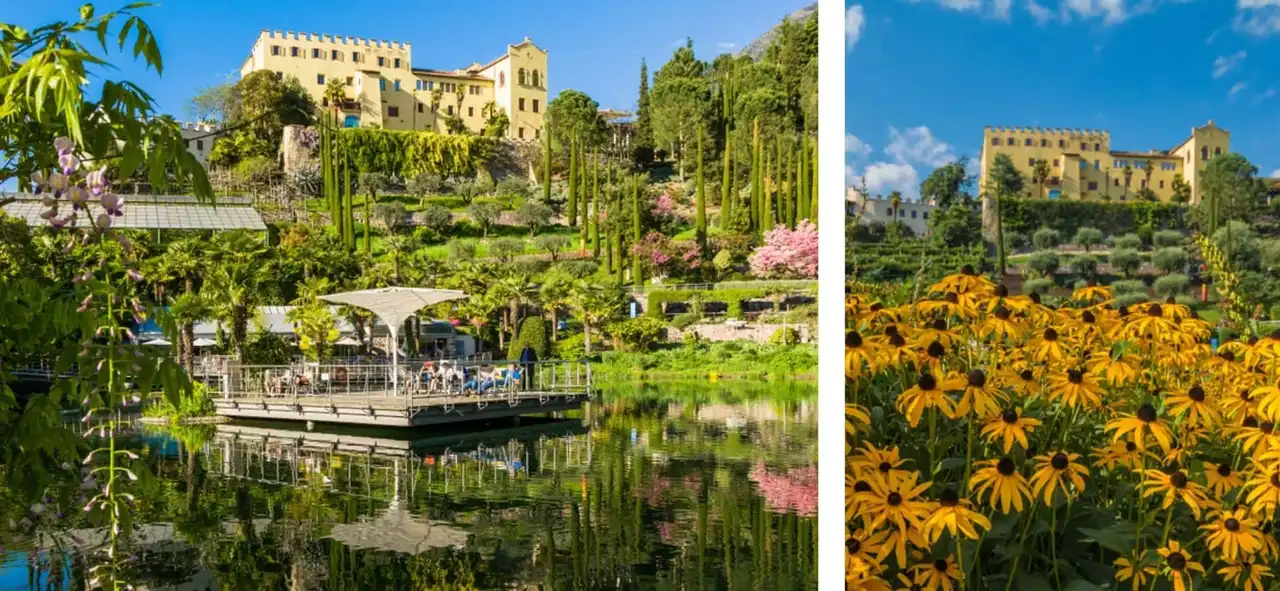
The Castle of Trauttmansdorff and its botanical garden – Photo credits: Shutterstock – lorenza62
And from the beginning of the afternoon, you can take the road to Bolzano for the rest of our South-Tyrolian adventures!
Bolzano: magic, Ötzi
? City of departure: Merano
? City of arrival : Bolzano
⛰ in Places to visit: piazza Walther, Notre-Dame Cathedral, Archaeological Museum, Christmas Market in Winter, Maretsch Castle, Runkelstein Castle, Renon Land Pyramids and Carrezza Lago
? Recommended time: 1.5 day
The two alpine and Mediterranean faces are also admired in the largest city in South Tyrol. Here, harmony is found in the kitchen, but also in the landscapes where vineyards cleave the mountainous peaks of the Dolomites. In any season, Bolzano enjoys a walk in his historic centre: from the piazza Walther, in tribute to the medieval poet Walther von der Vogelweide, to the cathedral of Notre Dame, as well as the medieval fresco of the Chiesa di Demenicani.
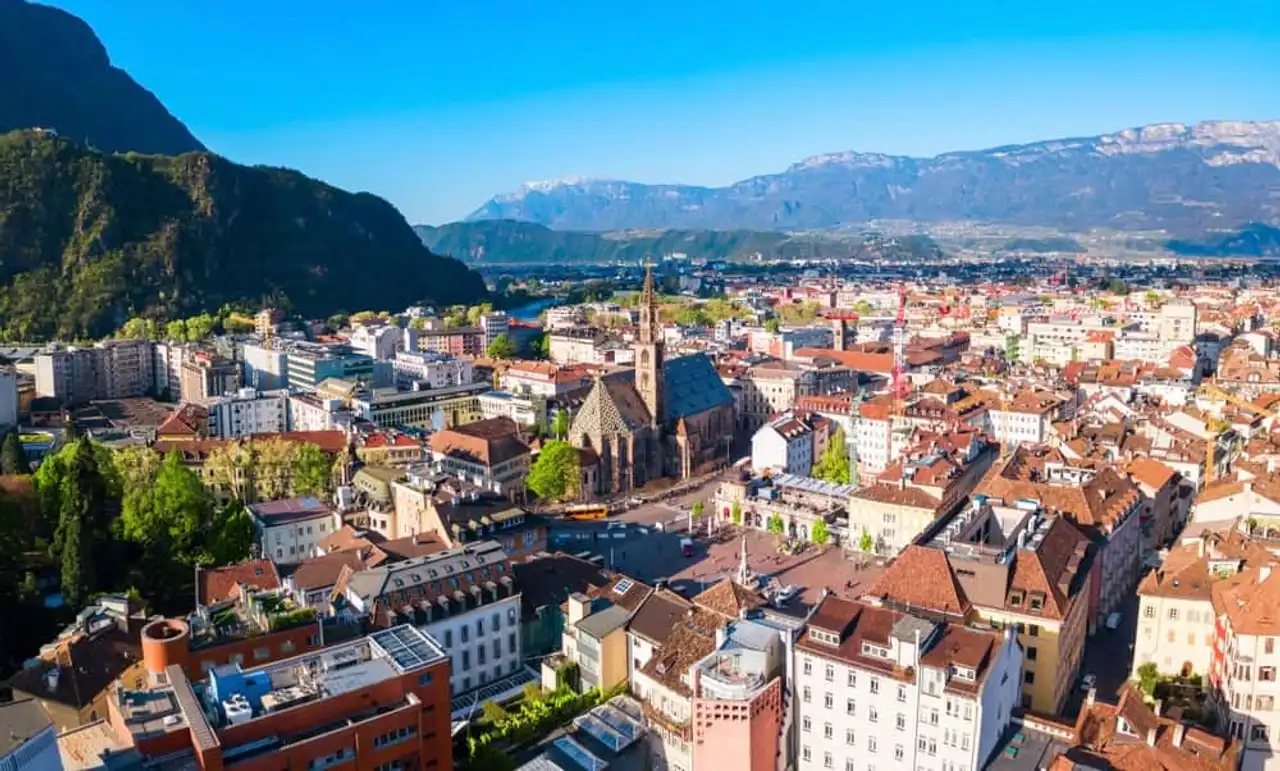
Bolzano, capital of the province – Photo credit: Shutterstock – saiko3p
And of course, the archaeological museum is a must-see for the star of the region: Ötzi. This 5,000-year-old mummy was found with its clothes and tools in a glacier in the region. She has not only helped to advance science by testifying to the way of wine of human beings at the time, but also was the subject of the ubiquitous criminal investigation, because *spoilers* Otzi was murdered !
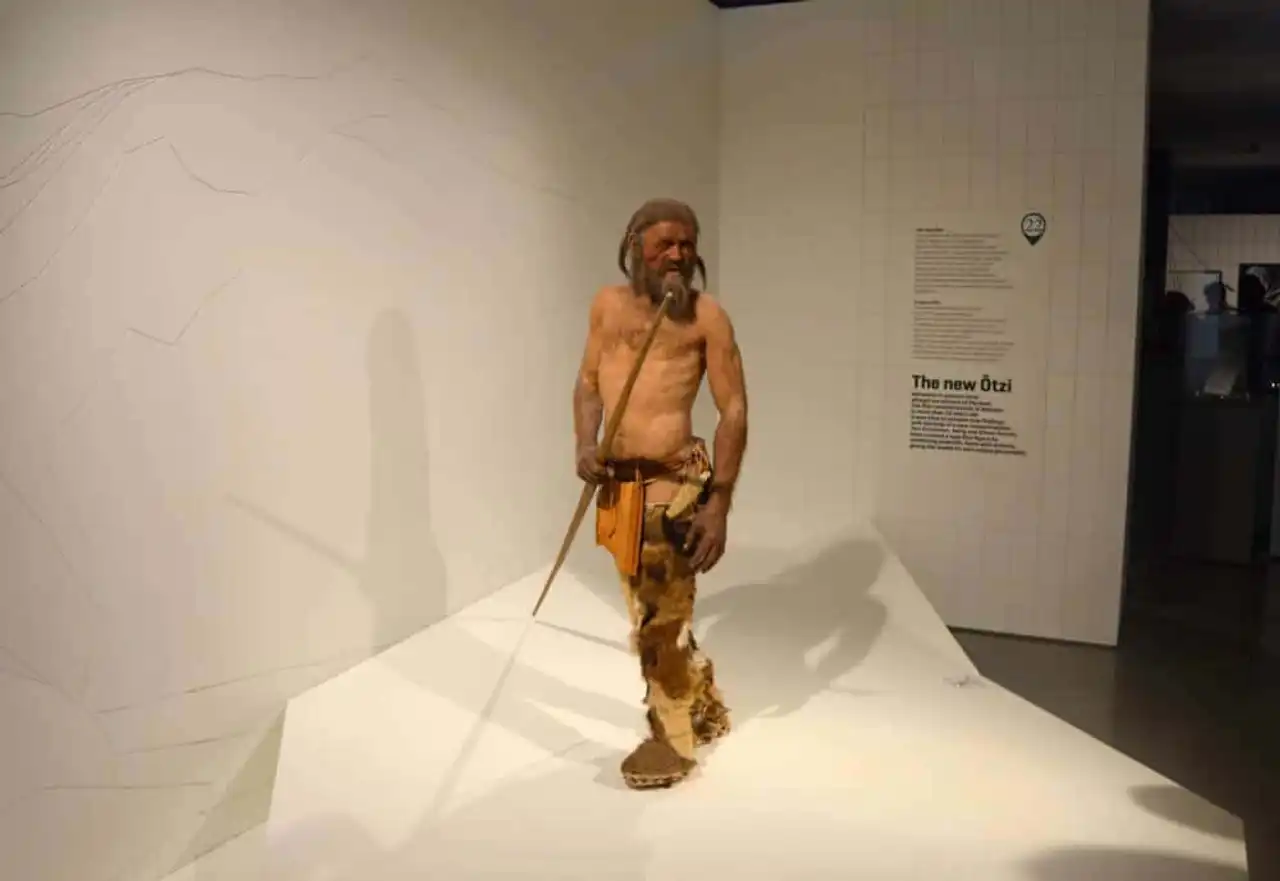
The famous Oetzi – Photo credit: Shutterstock – Zigres
In short, you will have understood, the Bolzano archaeological museum promises to be exciting.
In winter, enjoy the sumptuous traditional markets, where the cliché expression “Christmas store” finally takes its meaning... Indeed, it is in Bolzano that is one of the largest Christmas markets in Italy!
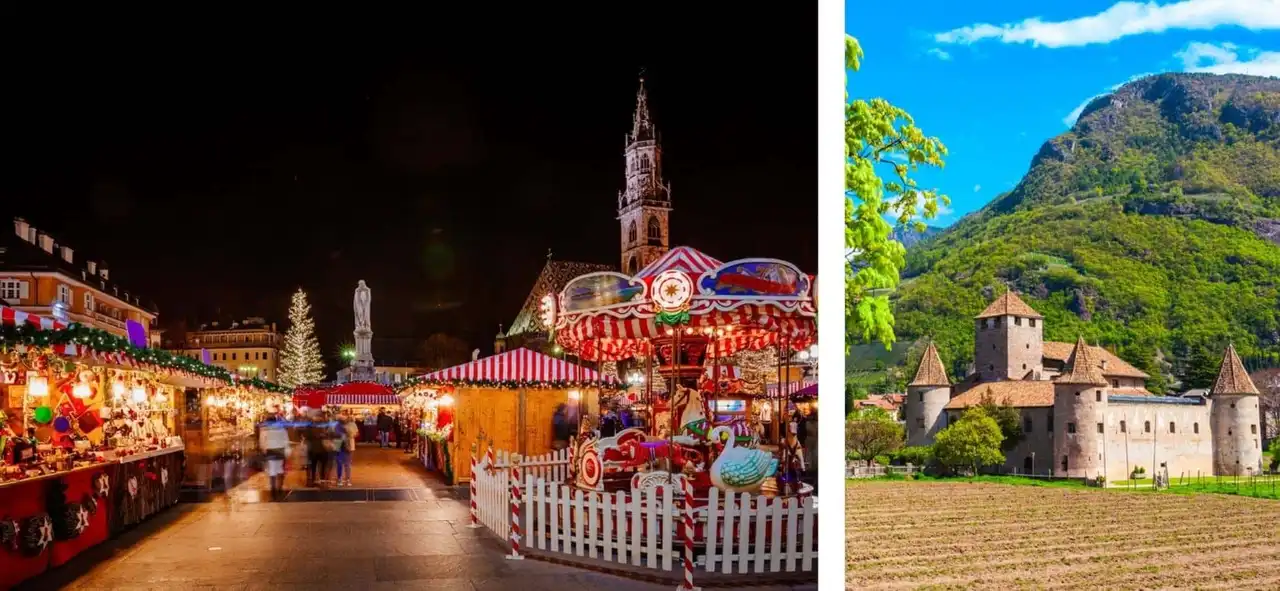
Between the Bolzano Christmas market and the Maretsch Castle, magic operates in all seasons – Photo credits: Shutterstock – Ekaterina Kondratova |MISUMI
To follow your stroll in the heart of the city, you can explore the few castles around. Discover, for example, the Maretsch Castle in the centre, which dates back to the 13th century. If you’re still in a châtelaine mood, then also go to Runkelstein, a 30-minute walk from the centre.
Like its neighbor the Maretsch, this castle serves as a time machine in the Middle Ages...
The next day, you will leave the urban area to explore two sites around Bolzano. The first site, the land pyramids of Renon, is 30 minutes away from the center by car (you can also opt for the cable car). These “crops of clays” come from an erosion to the ice age.
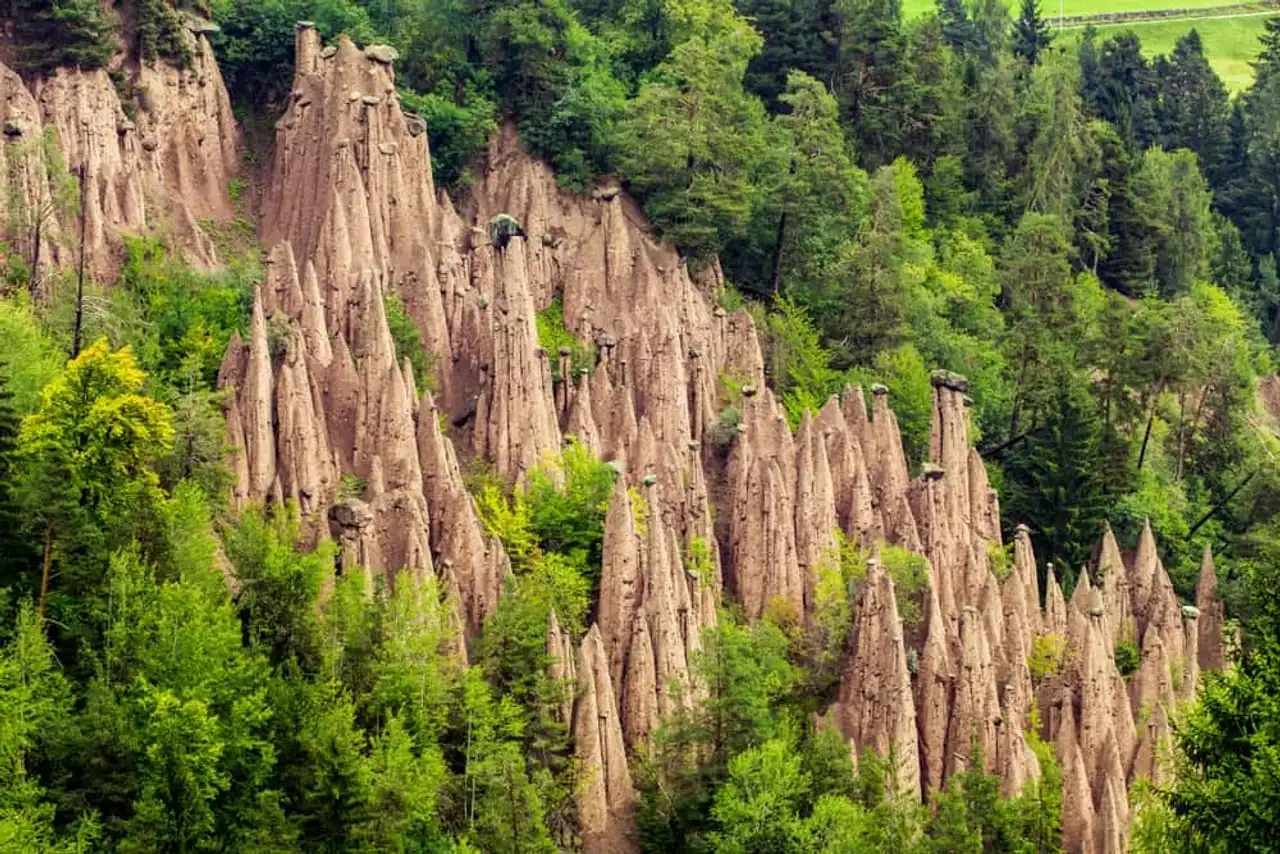
The Earth Pyramids of Renon – Photo credit: Shutterstock – Atmosphere1
You can evolve on one of the hiking trails according to your desire and shape (the n°24 is particularly flat!). This walk will offer you a breathtaking view of these jewels of the Dolomites.
After an invigorating lunch, you have to take the road for an hour to reach a second must-see site in the region: Lago di Carezza (Karersee). This water point among the most beautiful in the Alps reflects as a mirror the forest of epiceas whose resonance wood serves to make violins.
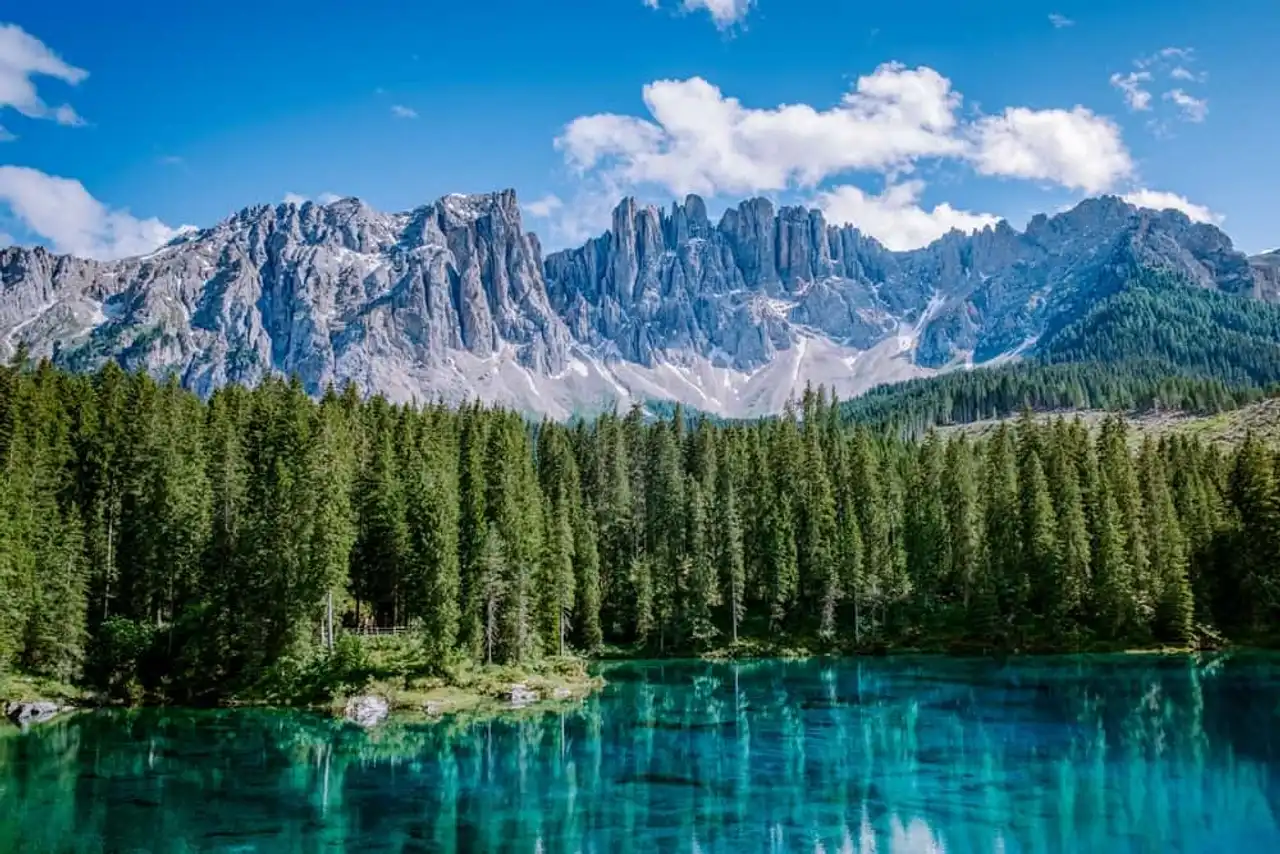
Lake Carezza – Photo credit: Shutterstock – fokke baarssen
Also, the needles of Catinaccio and Latemar are admired in this translucent water. This is the time to make the most beautiful shots, but also to appreciate the calm of the places! In winter, the ski resort Carezza will offer you to descend a few slopes while enjoying vitamin D. Indeed, there are more than eight hours of sun per day in the middle of the winter season.
In the heart of the alpages...
? City of departure: Bolzano
? City of arrival : Ortisei
⛰ in Places to visit: the town of Ortisei, Seceda, Alpe di Siusi
? Recommended time: 1 or 2 day(s)
Let’s leave Bolzano to continue our route to the east of South Tyrol. The new adventure of the day takes us first to Ortisei, a small village of 4,900 inhabitants in the Val Gardena. In this town where it is good to walk, you can admire the local craftsmanship including wood sculptures.
Because practice is family, but especially ancestral! And most importantly, this craftsman knows his letters of nobility thanks to the sumptuous Christmas cribs. The latter also recall that religious tradition is important in Ortisei: the chapel of Saint Anthony or the church of Saint Ulrich are two buildings that are worth a look. These are located at the two ends of the most beautiful shopping street in the Dolomites.
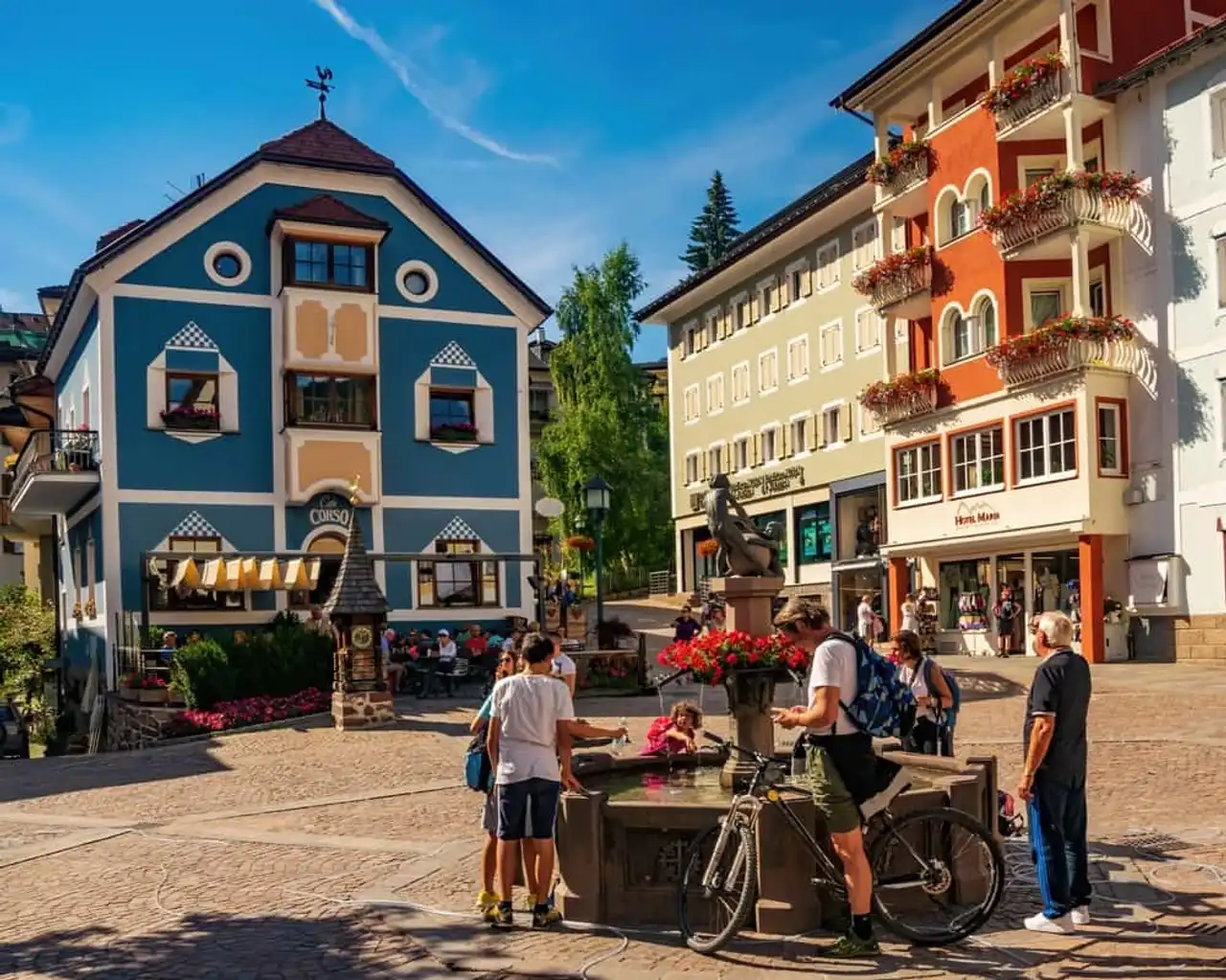
The charming town of Ortisei – Photo credit: Shutterstock – Haidamac
After a good walk (and some shopping?), enjoy a good little caffè whose Italians have the secret. The latter can be accompanied by a local sweetness cooked with love in a pasticceria Around.
From Ortisei, you will have to take the Mont Seuc cable cars to climb to more than 2,500 meters above sea level. Perched in the mountains, Seceda’s peaks will offer you. In the summer, we cross a few cattle herds in pastures. In winter, it is a snow coat that covers the peaks. In addition, several hikes are possible to climb “above” from Col Raiser for example, located 3.5 km from Seceda.
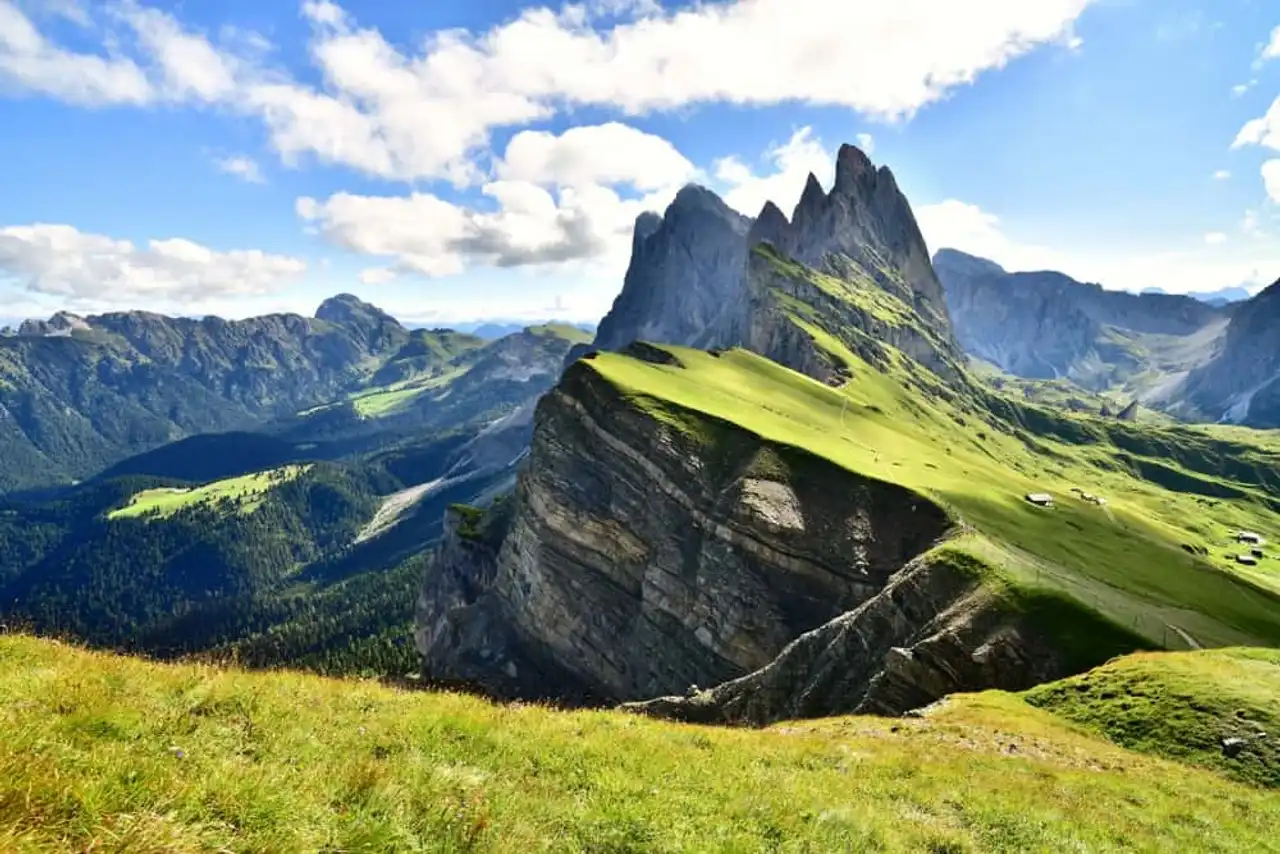
The Dolomites panorama from Seceda... – Photo credit: Shutterstock – Angelo Ferraris
The journey then continues in the middle of nature. Head to the Alpe di Siusi, where you will put your luggage in one of the many chalets of Europe’s largest mountain pasture. We sock the walking shoes (or ski shoes), and it’s gone! In the middle of the Dolomites, Alpe di Siusi offers an enchanting landscape, perhaps among the most spectacular in the entire region. Then breathe this fresh air, open your mirettes (and those of your camera), and let yourself be fooled by the sound of silence.
Small recommendation: the place is ideal for a small picnic with some local products, previously purchased in Ortisei.
Discoveries of two valleys: Funes and Pusteria
? City of departure: Ortisei
? City of arrival : Brunico
⛰ in Places to visit: Chiesetta di San Giovanni, Santa Maddalena, Passo delle Erbe, city center of Brunico, Plan de Corones, cascades of Riva
? Recommended time: 1-2 days
From Ortisei to our point of fall in the city of Brunico, we will take a crossing path (the SP163). This one will make us cross a part of the sumptuous Val di Funès, with a mandatory stop (we insist) at the Chiesetta di San Giovanni. This baroque building sits alone in the edge of the forest and in the middle of mountain peaks.
A few places from there are the village of Santa Maddalena which houses a second church to be discovered. Take a little height in the village and admire it with the mountains in the background. The landscape seems out of a fantastic old tale.
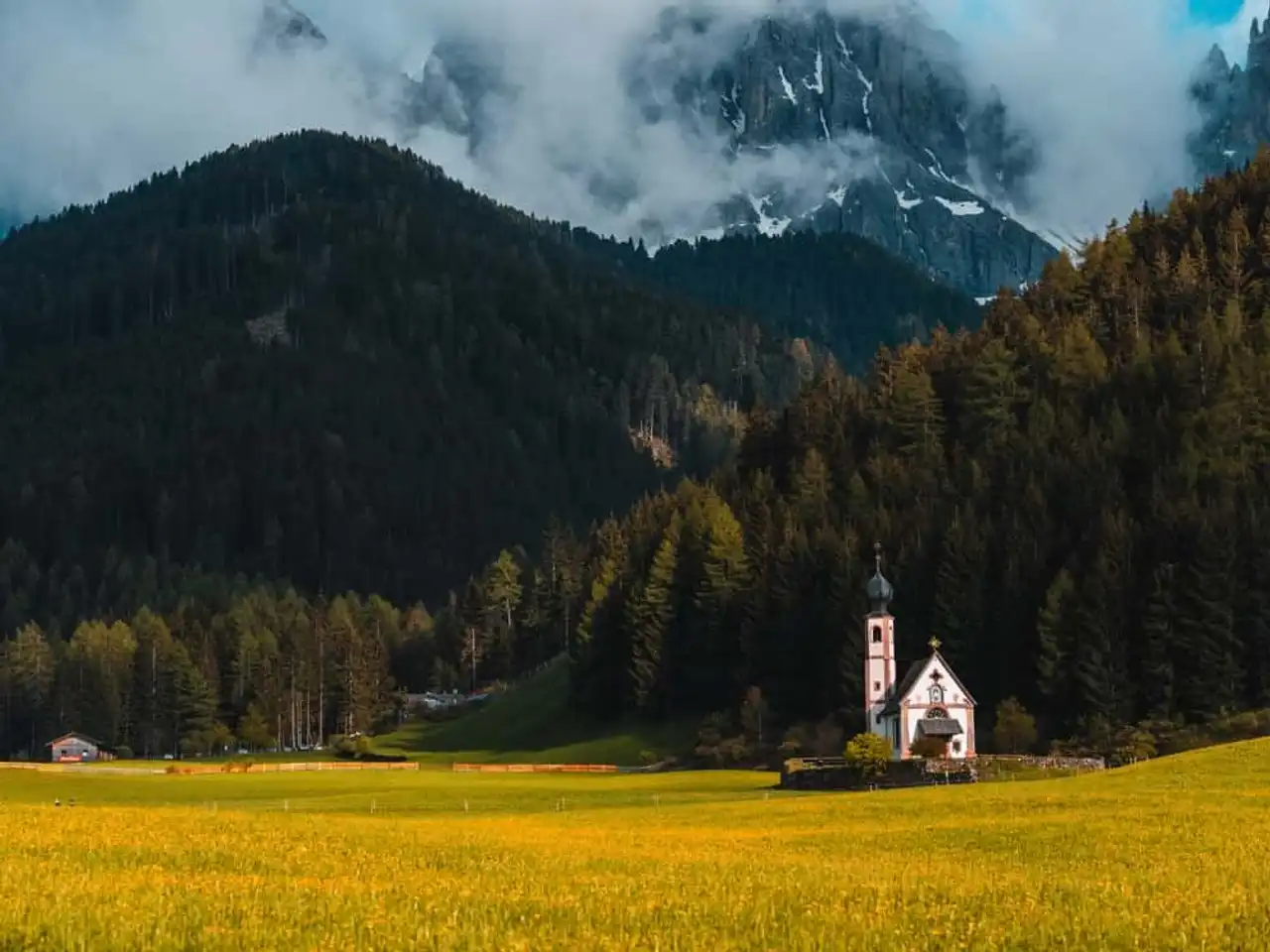
The Chiesetta di San Giovanni and its breathtaking scenery – Photo credit: Shutterstock – zodyakuz
After this short spiritual step, it is time to take the road back to our last stage. To make the journey even more enjoyable, you can take the panoramic road (SP29) which crosses the Erbe Pass. The place is particularly popular with cyclists.
Once the pass has passed: welcome to Val Pusteria! This alpine valley extending over 90km is the northern boundary of the Dolomites. In addition to its tourist attraction regarding the beauty of the landscapes, it is known for its ice hockey team and its summer football camps. Like most of the valleys of the South-Tyrol, Val Pusteria is perfectly suited to cycling as a bike path crosses it.
Our first destination in Val Pusteria will be its capital: Brunico. The city is dynamic, with fairs, some markets and a textile manufacturing tradition still well anchored. But it is also a place of history, as evidenced by its castle overlooking the town.
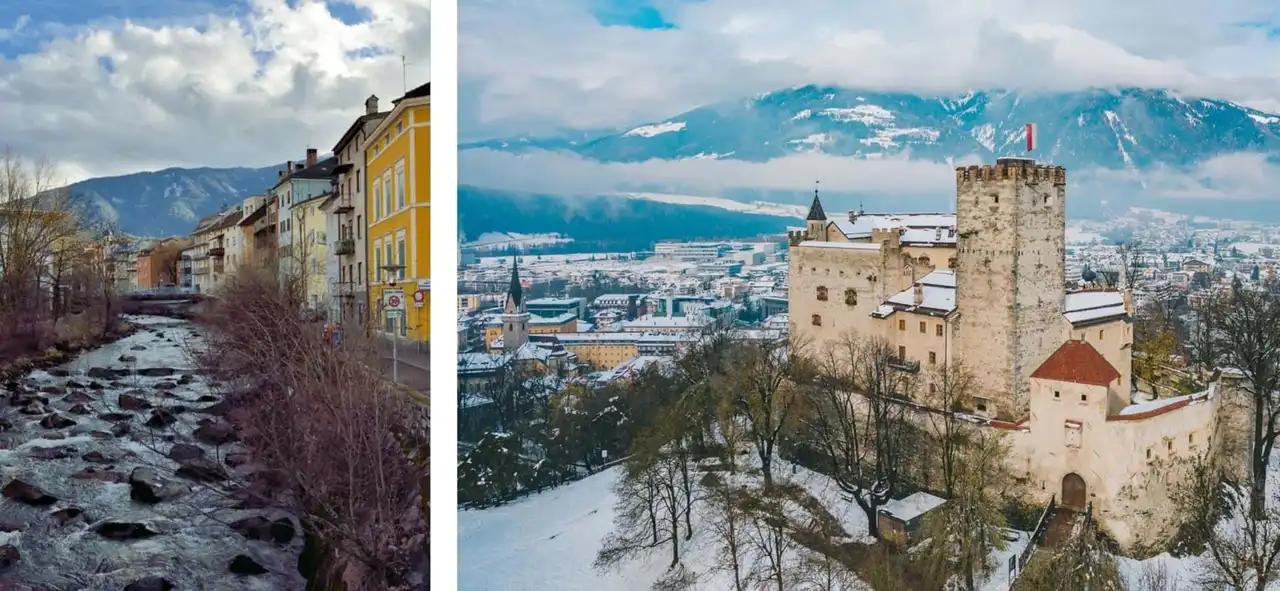
Brunico, another wonder of South Tyrol – Photo credits: Shutterstock – Ekaterina Sergey Vovk Find A. Aleksandravicius
Brunico has a few museums: the RIPA, the Stadtmuseum or the Messner Montain Corones that invite you to discover the local heritage. Speaking of locals, wouldn't it be time to eat a bite? Many tables will welcome you. On the menu: speck, of course, but also risotto, pasta, series of antipasti and spätzle, because let’s not forget that we are in the Alps.
By walking around Brunico, you will undoubtedly notice a summit overlooking the city. It is Mount Plan de Corones, located about 2,300 metres above sea level. He intrigue you? Let's go for a ride! Corones map serves both a ski area in winter and a hiking place in summer.
In addition, the LUMEN Mountain Photography Museum is a must-see in the area. After one or two hours in this building built by visionary architects EM2 Archiekten, we go to the peace bell Concordia 2000. A bell that has the honorary title of the second largest bell in the Alps.
Promised, this object of 18 tons, built to demand peace in the world, is worth a look.
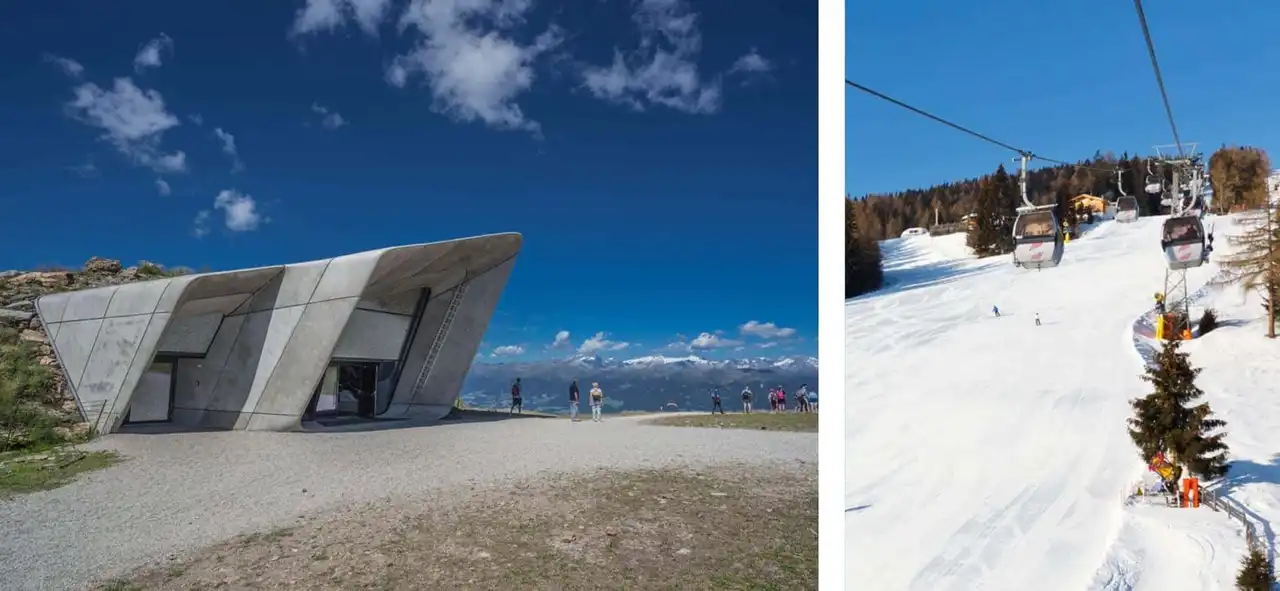
On the left: the Messner Find on the right: the Kronplatz Ski Resort – Photo credits: Shutterstock – MoLarjung Patrick Poendl
To finish this day in the Val Pusteria, and if you are not filled with adventures in the middle of nature, take the road 15 minutes north of Brunico to discover the Riva cascades, also known as Campo Tures. Waterfalls are particularly impressive, especially after the melting of glaciers in spring and summer.
The great beautifulzza: the eastern lakes in Tre Cime di Lavaredi
? City of departure: Brunico
? City of arrival : Tre Cime
⛰ in Places to visit: Lago di Braies, lago di Landro, lago di Dobbiaco, Tre Cime di Lavaredo
? Recommended time: 2 days
What if we keep the best for the end? Everything is relative, but what you will discover for this last day of travel is breathtaking. To explore these last beads of South Tyrol, you have to take the road that still leads to the east (SS49). It is through this part of the Dolomites of the South-Tyrol that we find some wonderful lakes.
The first stage takes us to Lago di Braies, where you will have to take a path to reach it: the Braies di Dentro road. Considered one of the most beautiful lakes in the Dolomites, the lake is located in the heart of a natural park classified as a UNESCO World Heritage Site. His characteristics? A clear water, where you can admire your reflection, but especially the Dolomites.
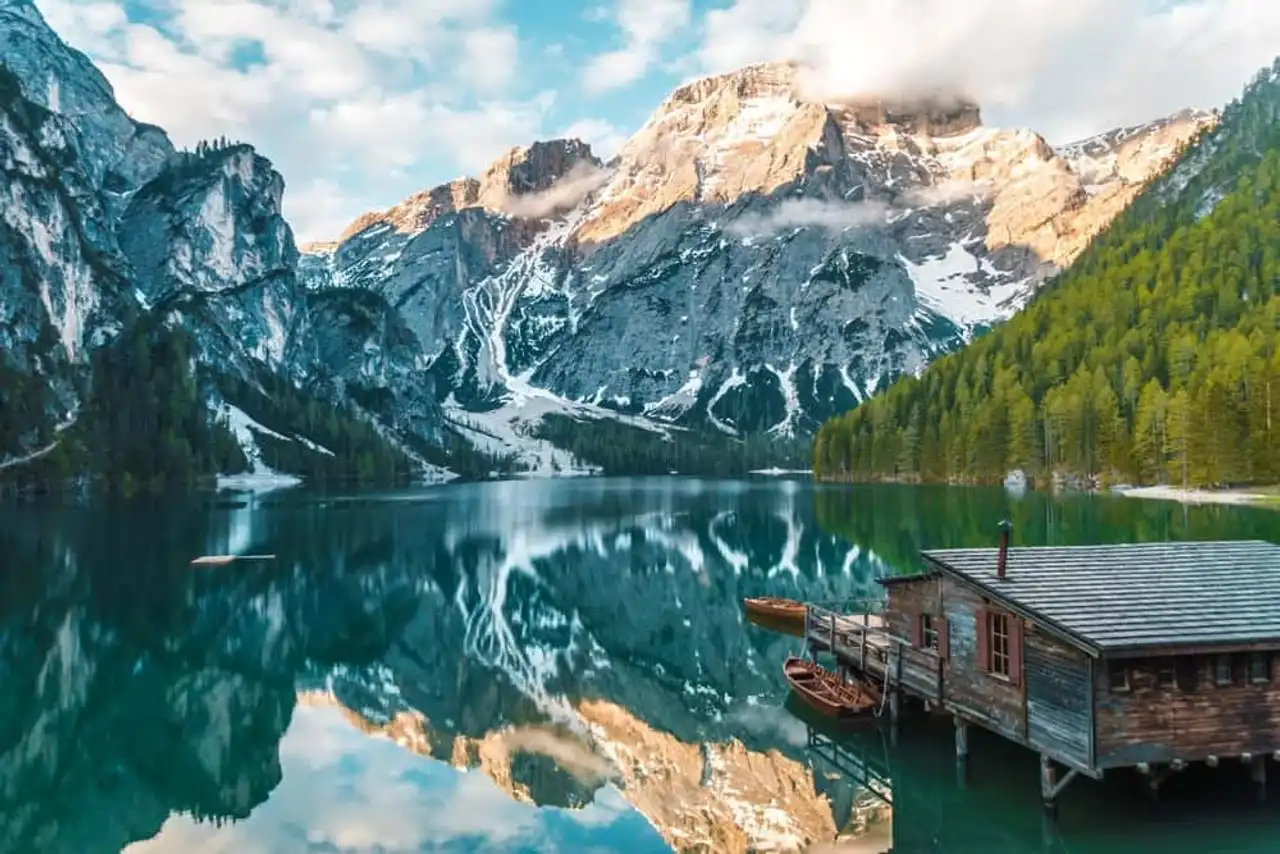
Lake Braies, an exceptional place... – Photo credit: Shutterstock – Swedishnomad.com – Alex W
A small wooden hut blends into this landscape that would almost give us a desire to entrust ourselves to it to write a novel. Also, the lake navigates in a boat if the water level allows, or if the water level is not frozen, of course.
After this poetic break, you have to go back to the second lake of the day: lago di Landro. This one is in the heart of the val di Landro, a sumptuous natural site (you will have understood it: everything is beautiful in the South-Tyrol). The lago di Landro is nested between a few high peaks.
You will first be drawn to its color which, if the time is on your side, is a magnificent turquoise blue. Then stroll around this splendid water point and let your dreams go. The place, as out of time, is then perfectly suited to dreaming.
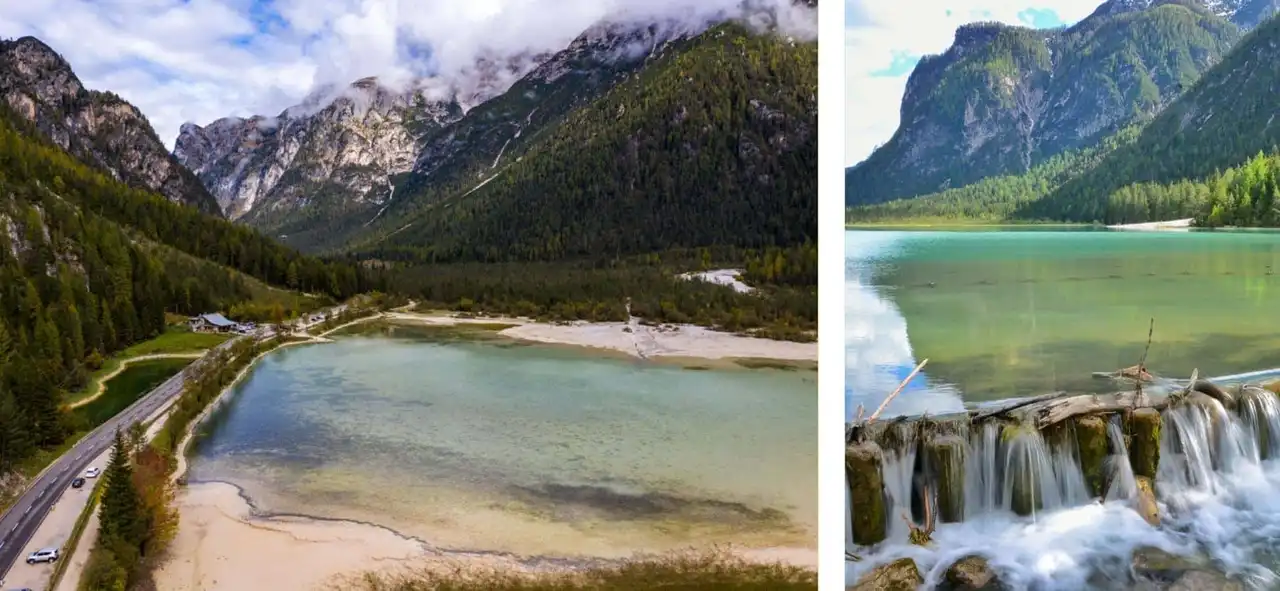
On the left: Lake Landro To the right: Dobbiaco Lake – Photo credits: Shutterstock – DaLiu beerchatdanai
Once the walk is complete, it is a third and final lake that you must discover: lago di Dobbiaco. This alpine lake, perched at 1,176 metres above sea level, is just as fascinating as these neighbors. There, too, you will be able to navigate this fairytale basin. And as we don’t get tired, it’s possible to spend the night in a campsite by the water, or in a hotel near the city of Dobbiaco.
After a short night, but restorative (the calm of the places helping), it left for the last stage of this trip in South Tyrol. The final destination will be Tre Cime di Lavaredo: a pass of the Dolomites divided into three “cimes”, located at 3,000 meters above sea level. To reach it, you have to walk!
Tre Cime hiking is accessible to everyone: it lasts about 2 to 3 hours, 8 kilometers. Once the Lavaredo refuge reaches, and the hike started to the Locatelli refuge, magic works quickly. The three peaks await you, mysterious, or almost threatening if the weather is noisy.
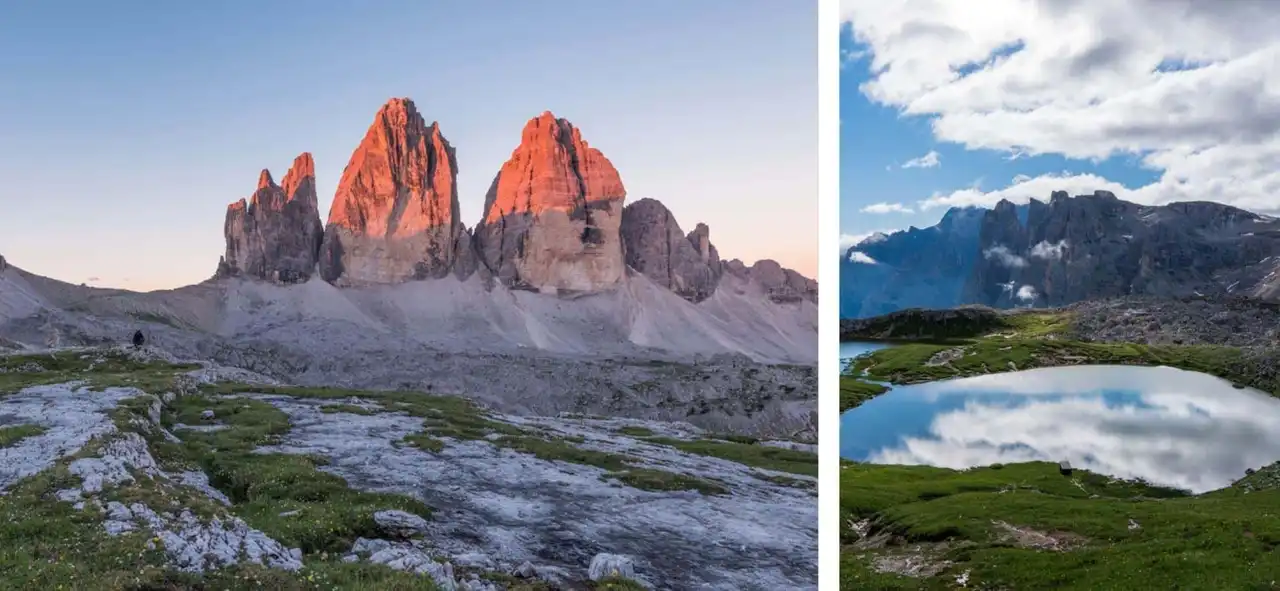
Find Left: Tre Cimes Right: Lake Pani – Photo credits: Shutterstock – Ales Krivec martim zamarski
Nearby are two water points: the Piani lakes. Take the time to take a tour and enjoy this walk that will remain, for sure, a beautiful holiday souvenir.
So, you want to jump into the car or get a mountain bike to explore this pearl of the Alps? So live, like us, your best dolce vita discovering South Tyrol. Admire its sacred multicultural heritage and its delicious panoramas. And greet Ötzi from us!
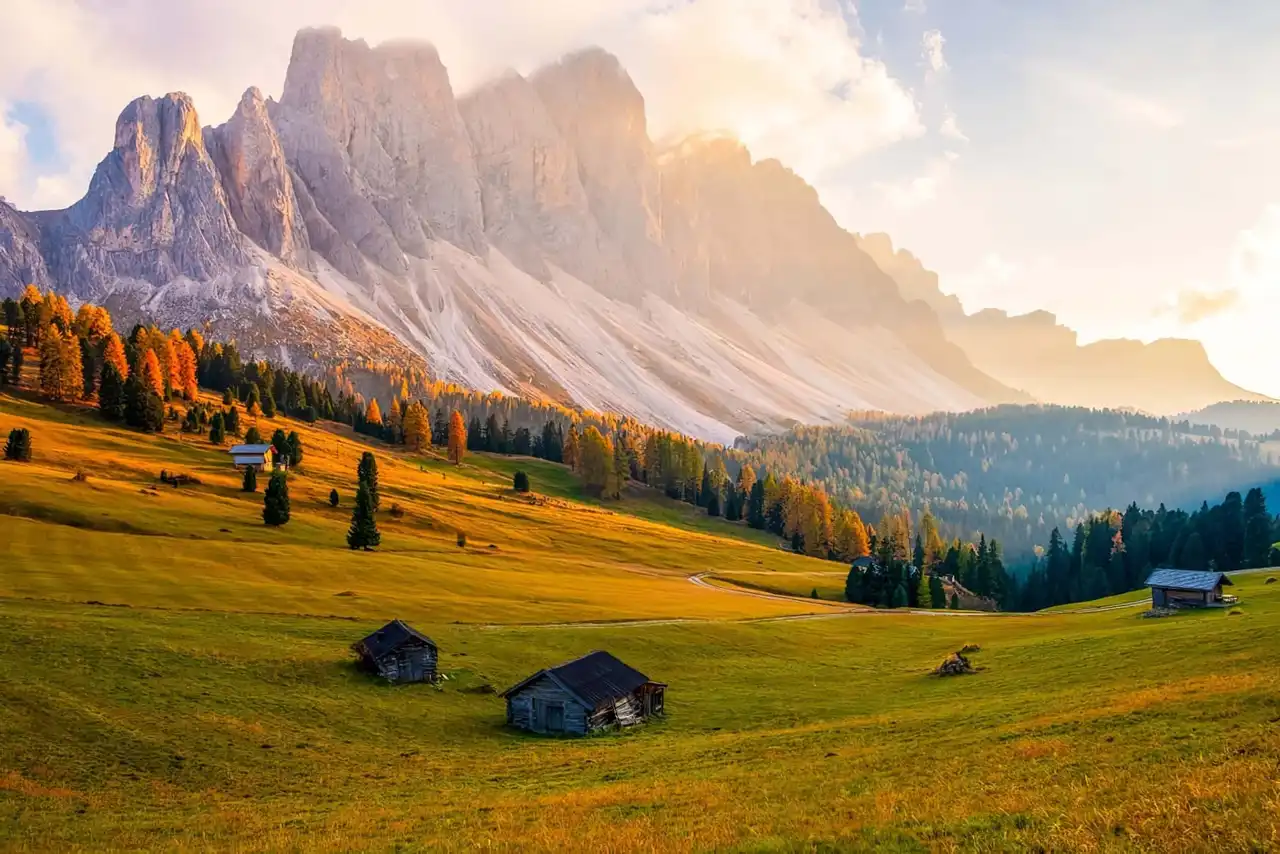




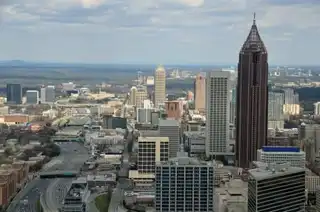
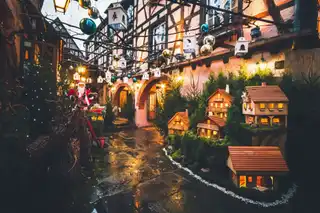
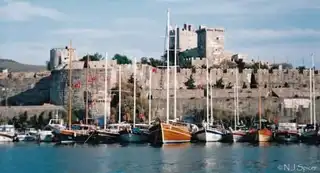
Loading comments ...